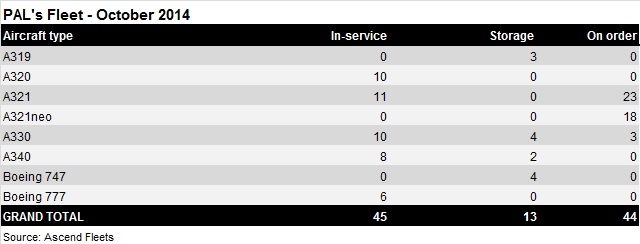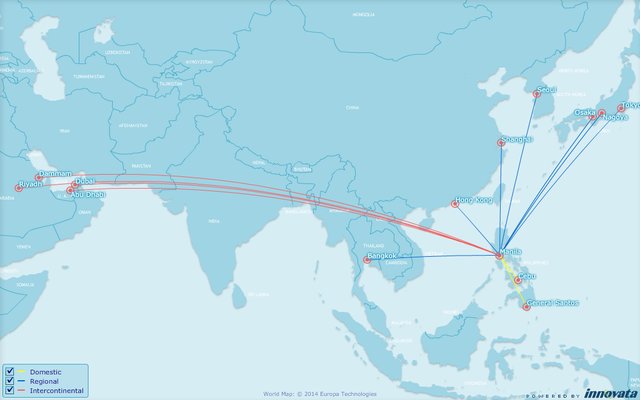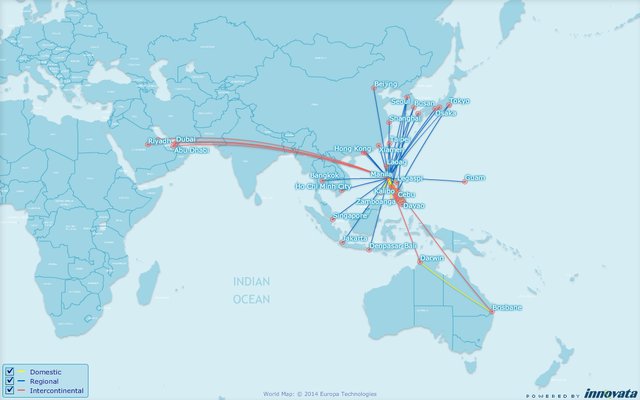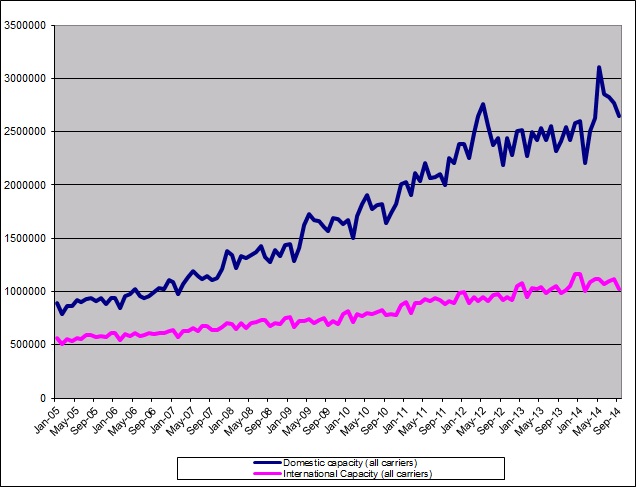Less than a month after returning to Philippines Airlines (PAL) as its general manager, former president Jaime Bautista has come out to say that the carrier has “too many planes”.
This development comes as the Lucio Tan Group regained full control of the Philippine flag carrier last month, after buying out San Miguel Corporation’s 49% stake.
Under the regime of San Miguel’s Ramon Ang, PAL embarked on a major fleet modernisation plan, which the carrier says has reduced operating costs. In August 2012, it placed a firm order with Airbus for 34 A321s, 10 A321neos and 10 A330-300s.
Following Bautista’s comment, PAL Holdings made a stock exchange disclosure saying it is “seriously studying/considering deferring the delivery of certain aircraft”. The carrier also confirmed that it is working on a North America focused business plan, which would require fewer of the A320 family aircraft it has on order.
Bautista’s rationale is that “many planes were ordered by PAL” and that there is a need to “check if the market requires all these planes”.
PAL then tells Flightglobal that the flag carrier is also looking to divest four 2013-built A330-300s which are “currently excess” to the carrier’s requirements.

Flightglobal’s Ascend Fleets database shows that PAL has a fleet of 45 aircraft in service, comprising A320 family, A330s, A340s and Boeing 777-300ERs. It also has an additional 44 aircraft – 23 A321s, 18 A321neos and three A330s - on order.
The carrier has been on a delivery roll over the last two years. PAL received all 10 of its in-service A330s in 2013 and 2014. It also has four 17-18 year old A330s in storage, and this October it will take the remaining three A330s it has on order.
PAL's A330 network October 2014

FlightMaps Analytics
FlightMaps Analytics shows that PAL's A330s serve Damman, Riyadh, Dubai and Abu Dhabi in the middle east, largely to compete with Cebu Pacific’s long-haul low-cost arm. It also uses the type to Japan, Seoul, Bangkok, Shanghai, Hong Kong, as well as to Cebu City and General Santos.
PAL's North Asian routes are also within operating range of the 11 A321s it took delivery of over the last two years.
As confirmed by the airline, it could also soon be deferring some of the A320 family aircraft it has on order. Its A321s on order are due to be delivered from November 2014 through to 2016, while the A321neos will enter its fleet from 2017 through to 2022.
PAL A320 family aircraft network October 2014

FlightMaps Analytics
FlightMaps Analytics shows that the carrier operates its A320 family jets on regional and domestic routes. It's top narrowbody routes by capacity are from Manila to Cebu, Davao and Iloilo - the three most important routes in the Philippines.
Despite PAL's growth, however, Cebu Pacific is the dominant carrier with a 37.7% marketshare on seats originating at Philippine airports. Still, the flag carrier is a formidable rival: PAL itself has 24.1% of the market and unit PAL Express 20.7%.
Similar to other parts of Southeast Asia, capacity has grown very strongly in the Philippines, but the situation is improving with the consolidation of six airlines into three airline groups over the last year. Cebu Pacific’s acquisition of Tigerair Philippines comes after AirAsia took a 49% stake in Zest Air. The remaining players in the market are now the Cebu Pacific group, AirAsia Group and the Philippine Airlines group.
But although capacity is falling domestically (for the time being at least), international capacity growth has held steady. Moreover, international capacity growth has historically been far less volatile. This relative predictability is obviously an opportunity for PAL, especially given that Cebu Pacific is still mainly a niche player in the long-haul market, especially when compared to the likes of AirAsia's AirAsia X unit.
Philippine capacity production January 2005-September 2014

Capstats
Higher yielding long-haul services could also help balance any weakness in its home market. With this, PAL may also consider adding more Boeing 777-300ERs to its fleet.
PAL’s services to North America and London are operated using fuel-hungry A340s and its newer 777s. The carrier has also said that it will begin a four-times weekly Manila-Vancouver-New York service next March, and also introduce a fourth weekly Manila-Vancouver-Toronto service. This follows the US Federal Aviation Administration’s upgrade of Philippines to the category one status earlier this year.
PAL’s change in management looks set to bring with it more changes to come.
The Lucio Tan Group's next steps will be crucial as the loss-making airline was just starting to be making some progress after locking a Ps1.78 billion ($39.8 million) operating profit for its last reported quarter. Hot on its heels is also Cebu Pacific, which has over the years successfully gained the position of being Philippine’s dominant carrier.
Source: Cirium Dashboard























